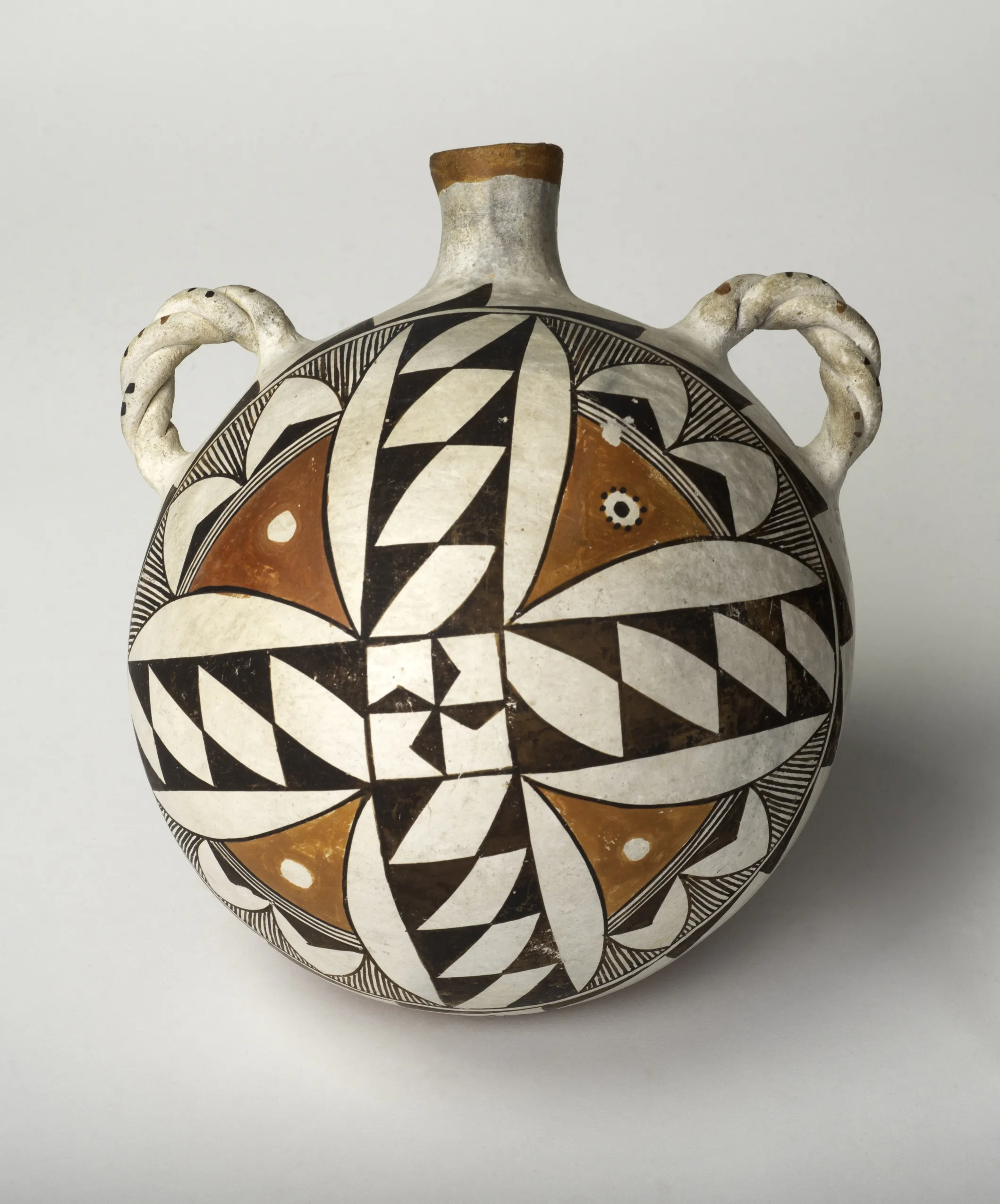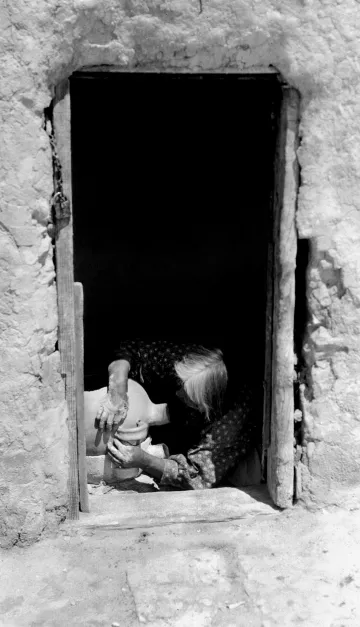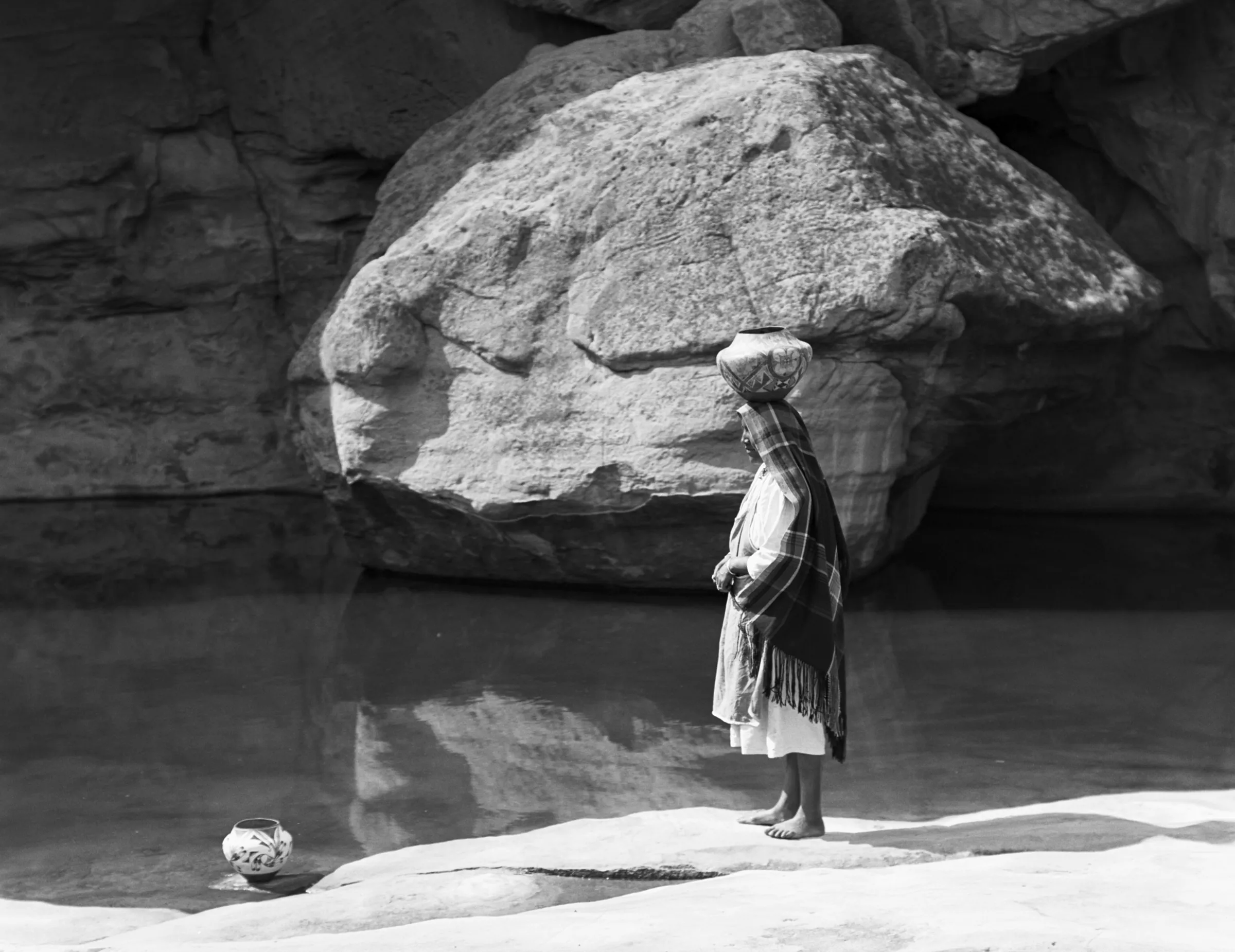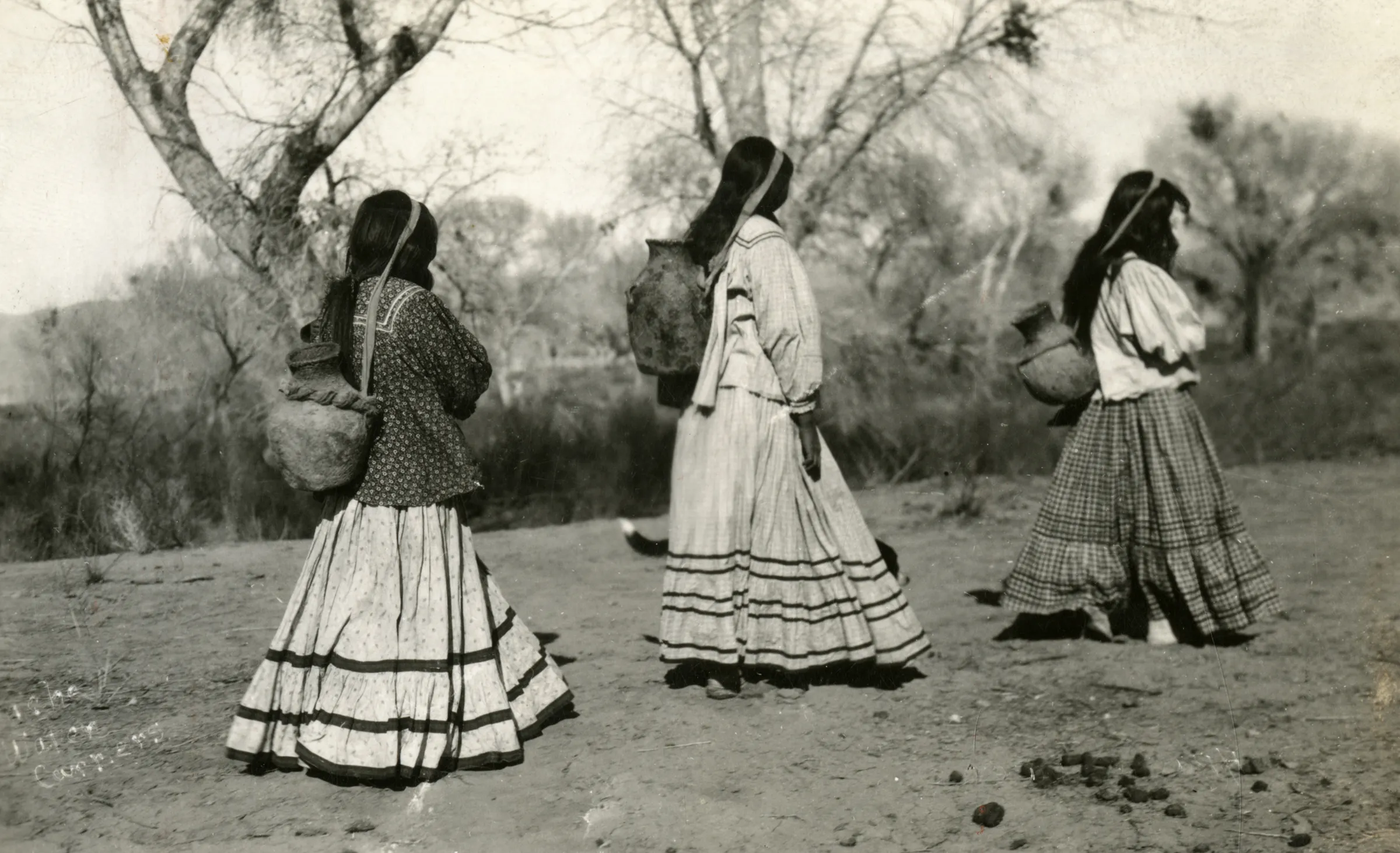
Acoma Polychrome canteen, ca. 1950, Pueblo of Acoma, NM. Unknown artist. Gift of Tom and Sharon Onak. Max. length: 8.4 in. (21.3 cm.). (Catalog No. 2015-530-4)
The Arizona State Museum Canteen Collection
The Arizona State Museum houses a collection of nearly 300 ceramic canteens made across space and time in the southwestern United States and northern Mexico by Indigenous artists and their ancestors. This exhibit is an expanded and edited version of a 2016 project by University of Arizona student intern Sarah Blomstrand, and highlights the diversity represented within the collection.
Suzanne Eckert, Ph.D., Head of Collections
Diane Dittemore, Associate Curator of Ethnological Collections
Jannelle Weakly, Photographic Collections Manager
Canteens Fill an Important Need

Hopi woman making a canteen, Walpi, First Mesa, Hopi Reservation, AZ. Forman Hanna, photographer, 1922. (Catalog No. 33568)
All living creatures need water to survive. In North American deserts, as in others, water is scarce and valuable, often requiring travel of long distances to obtain it. One solution to this problem among ancestral and historic Native American artisans was the canteen - a vessel with a narrow opening and a handle or other means for easy transport. The earliest canteens in the Southwest United States were made from gourds and may have been brought into the region over 10,000 years ago by Paleoindians.
Ceramic canteens appear around 1600 years ago. They were made in a variety of shapes, sizes, and decorations. Some canteens, as evidenced from carrying straps, were designed for using as people walked between neighborhoods or were hunting or gathering. Large canteens were for conveying water short distances and could supply water for a household; alternatively, Pueblo women could have carried water for their families short distances in ollas (jars designed for water storage) on their heads.

"Water Carrier, Acoma." Forman Hanna, photographer, 1933. (Catalog No. 33550)
While many historic farming groups used ceramic canteens in the Southwest United States, basketry canteens waterproofed with piñon pitch were lighter and more practical for historic nomadic peoples living in the region. Archaeologists have not yet found examples of ancient pitched basketry canteens so it is not known how far back this technique dates. The oldest example at ASM dates to the late 1700s and is thought to be Diné; it was found in a rock shelter near Chaco Canyon. Other people such as Apaches, Paiutes, Utes, and Pais (Hualapai and Havasupai) all manufactured pitched basketry canteens. They were also popular trade items with neighboring farming tribes including the Hopi and Zuni.

"The Water Carriers." Unknown photographer, ca. 1920-1930. (Catalog No. pix-783-x-36)





